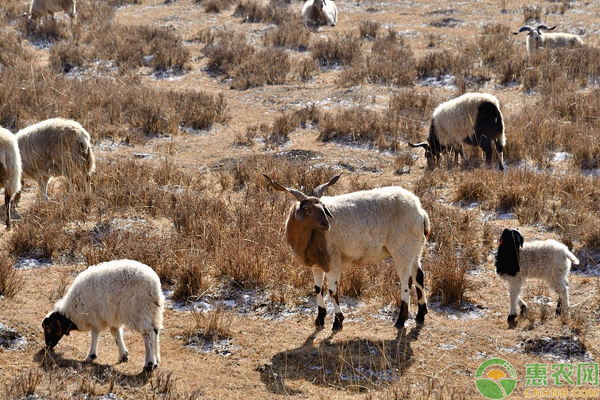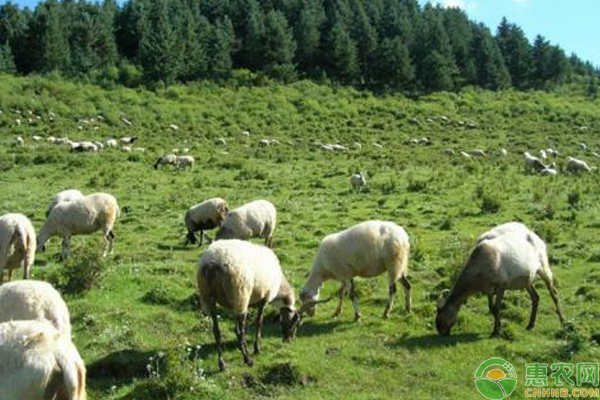Tibetan sheep is one of the original sheep breeds, and its hair is an excellent raw material for carpet hair. Has a good economic value. It is also the first choice for the breeding industry in Qinghai Province. How do you breed in Qinghai Tibetan sheep? If you don't know, you can take a look at the selection, breeding and breeding methods of Qinghai Tibetan sheep shared by Xiaobian.

    1 Distribution and type
Tibetan sheep are mainly distributed in the Qinghai-Tibet Plateau, and Qinghai is the main producing area. It is widely distributed and accounts for the largest proportion of livestock. According to its ecological environment, combined with production and economic characteristics, it can be divided into three categories: high prototype, valley type and Euler type. The high prototype accounts for 90% of the province and is the main body of Tibetan sheep, mainly distributed in alpine pastoral areas.
    2 Terms and definitions in the text
    2.1 Artificial insemination
Artificial insemination is a breeding technique in which the ram's semen is artificially injected into the genital tract of the estrus and the ewes are fetuses.
    2.2 Selection
The selection is to select the sheep that meet the people's requirements for seed use, and to eliminate the individuals who do not meet the requirements, or to improve them to improve and improve the quality of the sheep.
    2.3 Pedigree
The pedigree is a record of the predecessor status of a sheep, indicating the production performance and grade of its ancestors.

    2.4 descendant test
The descendant test assesses the breeding value of the breeding sheep through the characteristics and performance of the offspring.
    2.5 Optional
Selection refers to the choice of the male and female mate's spouse in order to consolidate and improve the advantages of the male and female ewes, correct their shortcomings, and produce good quality offspring.
    2.6 strain
Lines have certain common features in the same variety, and can inherit these characteristics relatively stably, and there is a certain degree of kinship between individuals, a certain number of groups.
    3 reproductive technology
    3.1 breeding age
Under good feeding and management conditions, breeding and breeding can start breeding when the live weight of the sheep reaches 60%~70% of the weight of the adult sheep. Breeding is usually started after the age of 1.5.
    3.2 Breeding season
The estrus season generally lasts in mid-July, and reaches the estrus in mid-August. The breeding in September is basically over.
    3.3 Breeding methods
Free mating: Put the ram into the ewes and let it mate with the estrus. The main disadvantages: the pedigree is unclear and cannot be matched; it is easy to cause inbreeding. Artificial assisted mating: male and female rams are grazing in groups, and the rams are mate with estrus ewes during the breeding season. The main advantage: the ability to perform matching work; can predict the date of lambing.

    3.4 Lamb technology
Pregnancy: The period from the start of pregnancy to the time of delivery is pregnancy. The average gestation period of the sheep is 150 days. Delivery room requirements: The delivery room is required to be spacious, bright, clean and well ventilated. The walls, floors and utensils in the delivery room should be disinfected during lambing. Umbilical cord disinfection: The umbilical cord is naturally broken and disinfected with 5% iodine at the broken end. If the umbilical cord is not broken, you can write the thin part of the base of the umbilical cord about 10 cm. Squeeze the blood on both sides of the umbilical cord with your hand and then twist it off, or cut it with scissors.
    4 breeding methods
    4.1 Breeding
At present, there are three main methods for breeding breeds: the ancestral system, the inbreeding system, and the phenotypic system. The ancestral system is to first find the species with excellent phenotype and genetic performance in the herd as the "family ancestor" of this line. The inbreeding system method selects species with rich genetic basis and production performance in line with the cultivation needs, and the genes of excellent traits are quickly homogenized by high inbreeding to achieve the purpose of establishing the system. The phenotypic construction method mainly establishes the strain according to the phenotype selection, that is, according to the production performance, the physical appearance, etc., the seed group (the male and female) having excellent performances and various advantages are selected, and then the breeding is blocked, after several generations. Strict selection, and finally it is possible to bring these advantages together to form a high product line.
    4.2 Breeding of this variety
In this variety, the variety performance can be improved by adopting measures such as selection, breeding, and improvement of feeding and management conditions. The breeding principle is to maintain good quality and improve the production performance of this variety.
4.2.1 Breeding measures. The first is to improve the grade structure of the varieties. The breed hierarchy consists of a core group, a breeding stock, and a commodity group. According to the market of animal husbandry, we constantly optimize the structure of farmed livestock and actively carry out structural adjustment and breeding of improved varieties. The second is the selection of seeds. The selection of seeds is to select the males and ewes that have good production performance and meet the requirements of the selected species in the flock according to the predetermined selection targets. The selection is to mate the selected male and female ewes in a planned manner in a certain way, in order to pass these excellent traits to future generations. The third is artificial insemination. Artificial insemination can expand the breeding efficiency of the rams and give full play to the role of the rams in the improvement of this variety. The fourth is to strengthen feeding management. Good varieties can fully demonstrate their high yield potential only under appropriate feeding and management conditions. Breeding of this breed of Tibetan sheep should be carried out on the premise of ensuring a balanced supply of nutrients throughout the year.
4.2.2 Breeding methods. One is to choose the species. Comprehensive evaluation of growth and development, meat performance, reproductive performance, hair performance, and skin performance. The second is the matching. The principle of matching: the principle of “public is better than motherâ€, that is, the advantage of the ram is mainly used to correct or overcome the shortcomings or deficiencies of the ewes; the principle of “being superior and superior†is when excellent rams appear in the flock. Ewes with the same quality and advantages in the same group can be mated to make the offspring more and more excellent; the principle of “equal adaptation†refers to the age of the sheep is roughly equal. Quality matching: divided into homogenous matching and heterogeneous matching, mainly used for individual matching and group matching. Individual Selection: Choose a better ram for a few excellent ewes in order to obtain better offspring than the ewes. Group matching: classify the ewes with the same advantages and disadvantages, and then assign one or several excellent rams to breed with them. Group: male, female, adult, and young groups. Grade sheep group: Grade 1 to 3 sheep that meet the identification criteria for Tibetan sheep breeding grades, grouped into grades according to grades, grouped by grade or mixed grade. General flock: Where the hair is white, the quality does not meet the grade identification criteria, and the individual groups. Variegated flock: Ewes with variegated or colored fibers are in this group.
Tibetan sheep is one of the main varieties of sheep in China. It has very good breeding prospects, but this variety has certain requirements for the growing environment. You need to choose the breeding conditions according to the actual climate and temperature. The above is about the breeding method of Tibetan sheep in Qinghai for your reference.
Collapsible Foot Spa,Foot Spa Bath Massager,Foot Bath Spa Massager,Foot Soak Tub
Huaian Mimir Electric Appliance Co., LTD , https://www.mimirfootbath.com